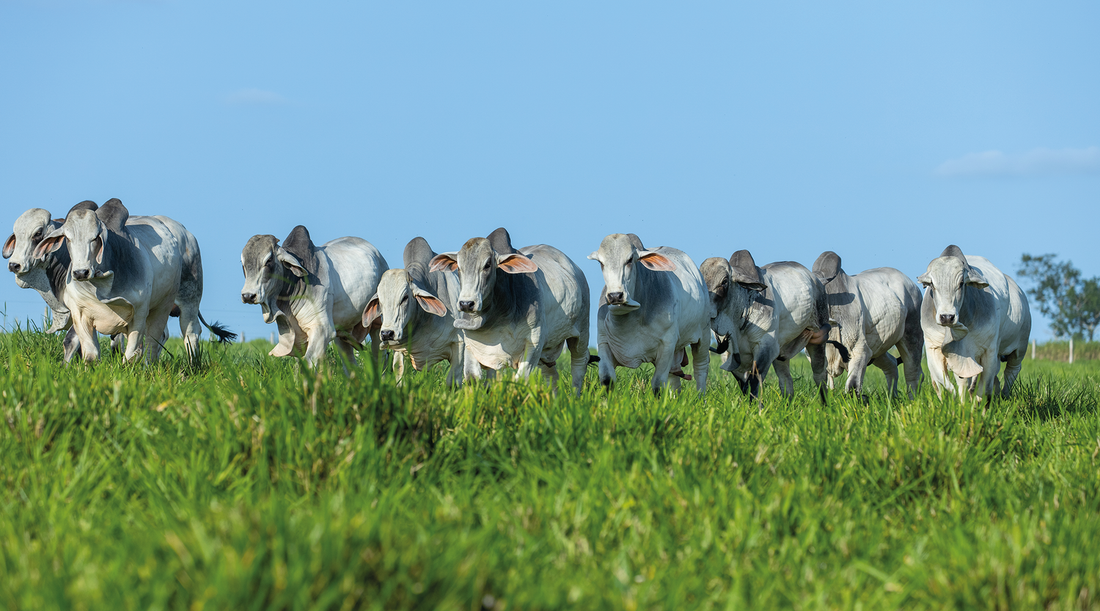
Technology and Genetics - Brazil as a Model for Angolan Livestock
Share
Biotechnology applied to bovine reproduction has revolutionized livestock production in several tropical countries, with Brazil standing out. Brazil's success in this field offers a model of excellence that can be adapted to Angola's reality, especially as the country seeks to strengthen its agricultural sector. Villas & Golfe Angola magazine, attentive to innovation in agribusiness, presents the practices that have made Brazil a global reference in bovine genetics and assisted reproduction.

Artificial Insemination: the basis of the genetic revolution
In Brazil, artificial insemination (AI) is a well-established practice, with over 18 million doses sold annually. This technique has been essential for the genetic improvement of herds, enabling targeted breeding, increased productivity, and increased animal resistance. The favorable climate, the dissemination of technical knowledge, the work of cooperatives, and the support of public and private programs have been decisive in the widespread use of AI, even among small producers. In regions like Alagoas, for example, insemination is already part of daily operations on cattle farms.
In Vitro Fertilization: Advancement and Elite Multiplication
Brazil is a world leader in bovine embryo production through in vitro fertilization (IVF), with over 750,000 embryos produced annually. This technique accelerates genetic gain, reduces the generation gap, and utilizes donors as young as 12 months old. It is widely used in both milk and beef production, resulting in a qualitative and quantitative leap in herds. IVF enables the highly efficient multiplication of superior matrices, representing a transformative tool for tropical livestock farming.
Surrogacy: successful embryo transfer
Surrogacy—or embryo transfer—has gained prominence in bovine reproduction. The process involves implanting a laboratory-produced embryo into a recipient cow, which will then carry the calf without any genetic connection. For this technique to be successful, careful selection of recipients is essential: they must be healthy, well-fed, with a good body condition score, and follow a strict health schedule. Hormonal synchronization, follicular aspiration, and laboratory embryo production complete this highly precise reproductive process.
Inclusion of small producers: access and cooperativism
Although the technologies are advanced, they are not reserved solely for large producers. Brazil has shown that small and medium-sized livestock farmers can benefit through associations, cooperatives, public subsidy programs, and partnerships with genetics companies. These structures facilitate access to biotechnologies with shared costs and technical training, promoting inclusion and sustainable development. This model can be perfectly adapted to the Angolan reality, with appropriate investments in training and community organization.
Angola and the future
For Angola to benefit from these biotechnologies, the first step is to invest in local technical training—"Education changes people. People transform the world," said Paulo Freire. The creation of embryo laboratories, partnerships with Brazilian universities and companies, and the strengthening of health and nutritional infrastructure are essential. The country boasts ideal conditions: a tropical climate, fertile territory, and cultural and linguistic proximity to Brazil, which favors technology transfer.
International cooperation: genetics as a strategic asset
Brazil already exports bovine semen and embryos to African countries such as Mozambique, Senegal, and South Africa. Angola, with the appropriate health and logistical framework, could become a strategic partner in this trade. The establishment of local technical assistance networks and the definition of clear health protocols are minimum requirements for the success of this cooperation. Access to Brazilian tropicalized genetics would be a competitive advantage for the development of the national herd.
Sustainability: a new era
Climate change and the growing demand for sustainability require innovative solutions. Reproductive biotechnology will be a pillar of the future of livestock farming in the tropics, helping to produce more with less, reducing the carbon footprint, and increasing efficiency per hectare. Techniques such as IVF, fixed-time insemination, and genomic selection will enable more productive, resilient, and environmentally viable herds.
Angola faces a unique opportunity: combining knowledge, technology, and political will to transform its agricultural potential into reality. The Brazilian model shows that it is possible—with science, organization, and cooperation.
